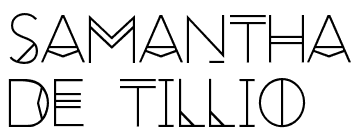Walnut Sculpture (1958-59)
During the 1950s, Castle was a student at the University of Kansas, first earning a Bachelor of Fine Arts in industrial design and then a Master of Fine Arts in sculpture. He took courses in metalworking and casting, and in wood carving, which he recalls was not his strongest subject at the time.(1) He took a silversmithing elective and was able to use the sculpture department’s metal-casting foundry—one of the first university foundries in the country.(2)
It was while doing his graduate work that Castle began to create dynamic sculptures made from gunstock blanks sourced from a nearby factory, work aptly described as three-dimensional drawings by art critic and curator Alastair Gordon.(3) Walnut Sculpture is one of the strongest examples of this series. Although rooted in the fine arts, these gunstock sculptures encouraged Castle to begin experimenting with the idea of sculpture-cum-furniture, or works that were interchangeable.
1. Oral history interview with Wendell Castle, June 3–December 12, 1981, Archives of American Art, Smithsonian Institution, Washington, DC.
2. Oral history interview with Wendell Castle, June 3–December 12, 1981, Archives of American Art; interview with Wendell Castle, March 25, 2015.
3. Gordon, Wendell Castle: Wandering Forms, 34, 36; Emily Evans Eerdmans, ed., Wendell Castle: A Catalogue Raisonné, 1958–2012 (New York: The Artist Book Foundation, 2015), 49.
It was while doing his graduate work that Castle began to create dynamic sculptures made from gunstock blanks sourced from a nearby factory, work aptly described as three-dimensional drawings by art critic and curator Alastair Gordon.(3) Walnut Sculpture is one of the strongest examples of this series. Although rooted in the fine arts, these gunstock sculptures encouraged Castle to begin experimenting with the idea of sculpture-cum-furniture, or works that were interchangeable.
1. Oral history interview with Wendell Castle, June 3–December 12, 1981, Archives of American Art, Smithsonian Institution, Washington, DC.
2. Oral history interview with Wendell Castle, June 3–December 12, 1981, Archives of American Art; interview with Wendell Castle, March 25, 2015.
3. Gordon, Wendell Castle: Wandering Forms, 34, 36; Emily Evans Eerdmans, ed., Wendell Castle: A Catalogue Raisonné, 1958–2012 (New York: The Artist Book Foundation, 2015), 49.

